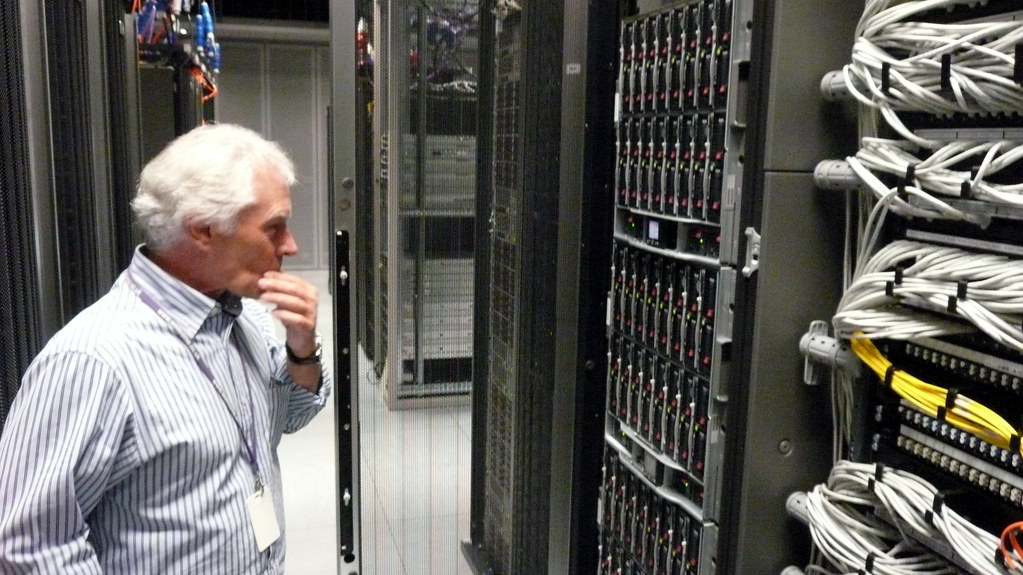These are my links for February 5th through February 10th:
Tag: development
The Importance of Being Open

Those of you who know me know I’m pretty keen on openness. The hypocrisy of using a Powerbook for my daily work and keeping an iPhone in my pocket continue to not be lost on me, but I want to spend a few lines on the power of openness.
Imagine if you will, a company developing a new laboratory device. The device is amazing and for early-access partners exceeds expectations in terms of performance but the early-access community feeling is that it’s capable of much more.
The company is keen to work with the community but wants to retain control for various reasons – most importantly in order to restrict their support matrix and reduce their long-term headaches. Fair enough. To this end all changes (and we’re talking principally about software changes here, but applies equally to hardware, chemistry etc. too) have to be emailed to the principal developer before they’re considered for incorporation into the product.
Let’s say the device was released to 20 sites worldwide for early-access. Now each one of those institutes is going to want to twiddle and tweak all the settings in order to make the device perform for their experiments.
So now you have community contributions from 20 different sites. Great! No.. wait.. what’s that? The principal developer’s on a tight schedule for the next major release? Oh.. the release is only incorporating changes the company wants to focus on for the mass market (e.g. packaging, polish, robustness). Hmm. Okay so the community patches are put back until next release… then the next…
Then something cool happens. The community sets up their own online exchanges to provide peer-to-peer support. Warranties and support be damned, they’ve managed to make the devices work twice as fast for half the cost of reagents. They’re also bypassing all the artificial delays imposed by the company, receiving updates as quickly as they’re released, and left with the choice of whether to deploy a particular patch or not.
So where’s the company left after all this? Well, the longer this inadvertent exclusion of community continues, the further the company will be left out in the cold. The worse their reputation will be as portrayed by their early-access clients too.
Surely this doesn’t happen? Of course it does. Every day. Companies still fear to engage Open Source as a valid business model and enterprising hackers bypass arbitrary, mostly pointless restrictions on all sorts of devices (*cough* DRM!) to make them work in ways the original manufacturer never intended.
So.. what’s the moral of this story? If you’re developing devices, be they physical or virtual, make them open. Give them simple, open APIs and good examples. Give them a public revision control system like git, or subversion. Self-documentation may sound like a cliché but there’s nothing like a good usage example (or unit/functional/integration test) to define how to utilise a service.
If your devices are good at what they do (caveat!) then because they’re open, they’ll proceed to dominate the market until something better comes along. The community will adopt them, support them and extend them and you’ll still have sales and core support. New users will want to make the investment simply because of what others have done with the platform.
Ok, so perhaps this is too naieve a standpoint. Big companies can use the weight of their “industry standards”, large existing customer-base, or even ease-of-use to bulldoze widespread adoption but the lack of openness doesn’t suit everybody and my feeling is that a lot of users, or would-be-users don’t appreciate being straight-jacketed into a one-size-fits-all solution. Open FTW!
Shared Development Environments; why they suck and what you can do about it

I’ve wanted to write this post for a long time but only recently have I been made frustrated enough to do so.
So.. some background.
When I worked at the Sanger Institute I ran the web team there. This was a team with three main roles –
- Make sure the website was up
- Internal software development for projects without dedicated informatics support
- Support for projects with dedicated informatics
When I started, back in 1999 things were pretty disorganised but in terms of user-requirements actually a little easier – projects had the odd CGI script but most data were shipped out using file dumps on the FTP site. You see back then and for the few years’ previous, it was the dawning of the world-wide-web and web-users were much happier being faced with an FTP/gopher file-listing of .gz (or more likely, uncompressed .fasta) files to download.
Back then we had a couple of small DEC servers which ran the external- and internal- (intranet) websites. Fine. Well, fine that is, until you want to make a change.
Revision Control: Manual
Ok. You want to make a change. You take your nph-blast_server.cgi and make a copy nph-blast_server2.cgi . You make your changes and test them on the external website. Great! It works! You mail a collaborator across the pond to try it out for bugs. Fab! Nothing found. Ok, so copy it back over nph-blast_server.cgi and everyone’s happy.
What’s wrong with this picture? Well, you remember that development copy? Firstly, it’s still there. You just multiplied your attack-vectors by two (assuming there are bugs in the script capable of being exploited). Secondly, and this is more harmful to long-term maintenance, that development copy is the URL you mailed your collaborator. It’s also the URL your collaborator mailed around to his 20-strong informatics team and they posted on bulletin boards and USENET groups for the rest of the world.
Luckily you have a dedicated and talented web-team who sort out this chaos using a pile of server redirects. Phew! Saved.
Now multiply this problem by the 150-or-so dedicated informatics developers on campus serving content through the core servers. Take that number and multiply it by the number of CGI scripts each developer produces a month.
That is then the number of server redirects which every incoming web request has to be checked against before it reaches its target page. Things can become pretty slow.
Enter the development (staging) service
What happens next is that the web support guys do something radical. They persuade all the web developers on site by hook or by crook that they shouldn’t be editing content on the live, production, public servers. Instead they should use an internal (and for special cases, IP-restricted-external-access) development service, test their content before pushing it live, then use a special command, let’s call it webpublish, to push everything live.
Now to the enlightened developer of today that doesn’t sound radical, it just sounds like common sense. You should have heard the wailing and gnashing of teeth!
Shared development
At this point I could, should go into the whys and wherefores of using revision control, but I’ll save that for another post. Instead I want to focus on the drawbacks of sharing. My feeling is that the scenario above is a fairly common one where there are many authors working on the same site. It works really well for static content, even when a CMS is used. Unfortunately it’s not so great for software development. The simple fact is that requirements diverge – both for the project and for the software stack. These disparate teams only converge in that they’re running on the same hardware, so why should the support team expect their software requirements to converge also?
Allow me to illustrate one of the problems.
Projects A and B are hosted on the same server. They use the same centrally-supported library L. A, B and L each have a version. They all work happily together at version A1B1L1. Now B needs a new feature, but to add it requires an upgrade to L2. Unfortunately the L2 upgrade breaks A1. Project A therefore is obliged to undertake additional (usually unforeseen) work just to retain current functionality.
Another situation is less subtle and involves shared-user access. For developers this is most likely the root superuser although in my opinion any shared account is equally bad. When using a common user it’s very difficult to know who made a change in the past, let alone who’s making a change right now. I observed a situation recently where two developers were simultaneously trying to build RPMs with rpmbuild which, by default, builds in a system location like /usr/share . Simultaneously trying to access the same folders leads to very unpredictable, unrepeatable results. Arguably the worst situation is when no errors are thrown during the build and neither developer notices!
Naturally a lot of the same arguments against shared development go for shared production too. The support matrix simply explodes with a few tens of applications each with different prerequisites.
Other options
Back in the day there were fewer options – one was left with always having to use relative paths and often having to discard all but the core system prerequisites in fear of them changing unexpectedly over time. Using relative paths is still a fairly inexpensive way to do things but sometimes it’s just too restrictive. There is another way…
Virtualisation is now commonplace. You probably cross-paths with a virtual machine every day without knowing it. They’re ubiquitous because they’re really, really useful. For our development purposes one core support member can build a standard, supported virtual machine image and post it on the intranet somewhere. All the other developers can take it, start their own instances of it and do all of their own development on their own hardware without fighting for common resources. Upgrades can be tested independently of one another. Machines can be restarted from scratch and so on. Once development is complete and given sufficient core resources, each developer can even bundle up their working image and ship it into production as is. No further core support required!
What tools can you use to do this? Parallels? Too commercial. VMWare? A bit lardy. Xen? Probably a bit too hard-core. KVM? Not quite mature enough yet. No, my current favourite in the virtualisation stakes is VirtualBox. Cross platform and free. Works great with Ubuntu inside. A killer combination capable of solving many of these sorts of problems.